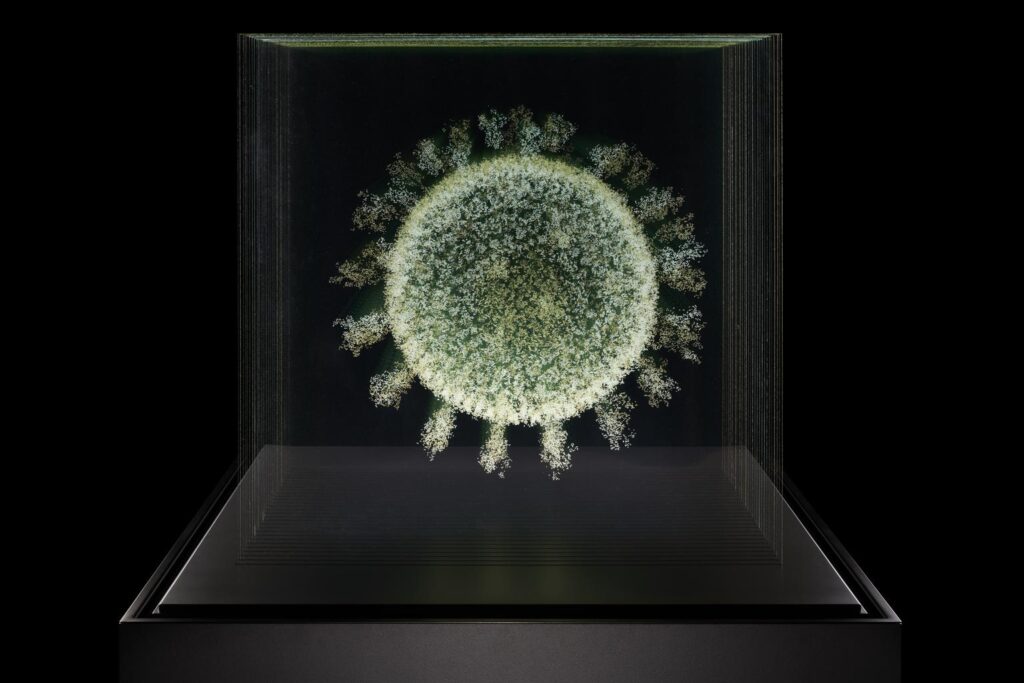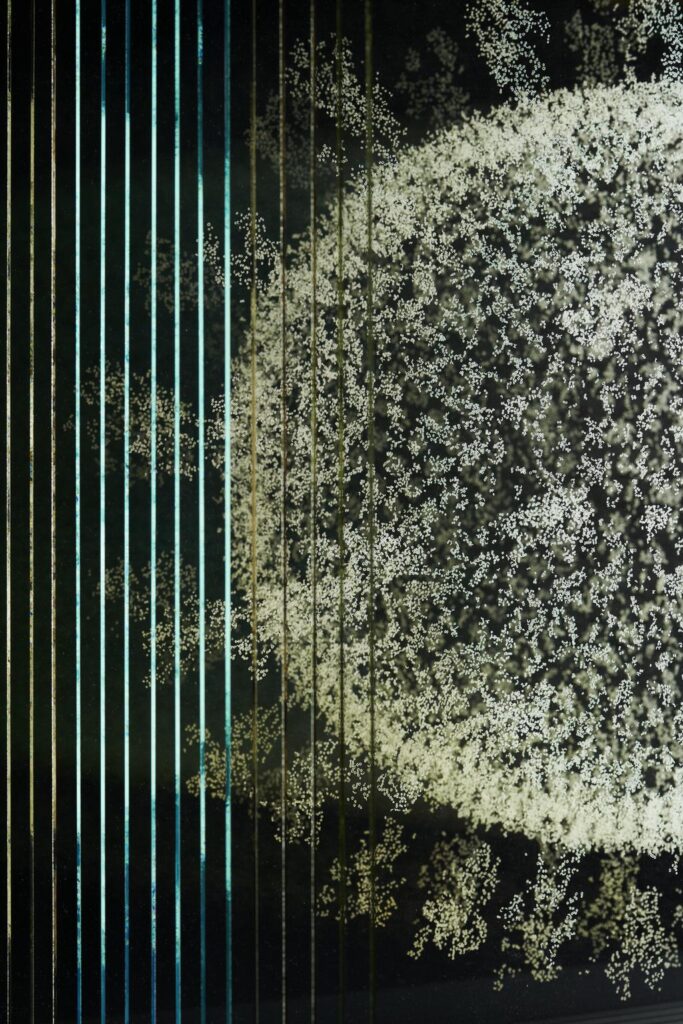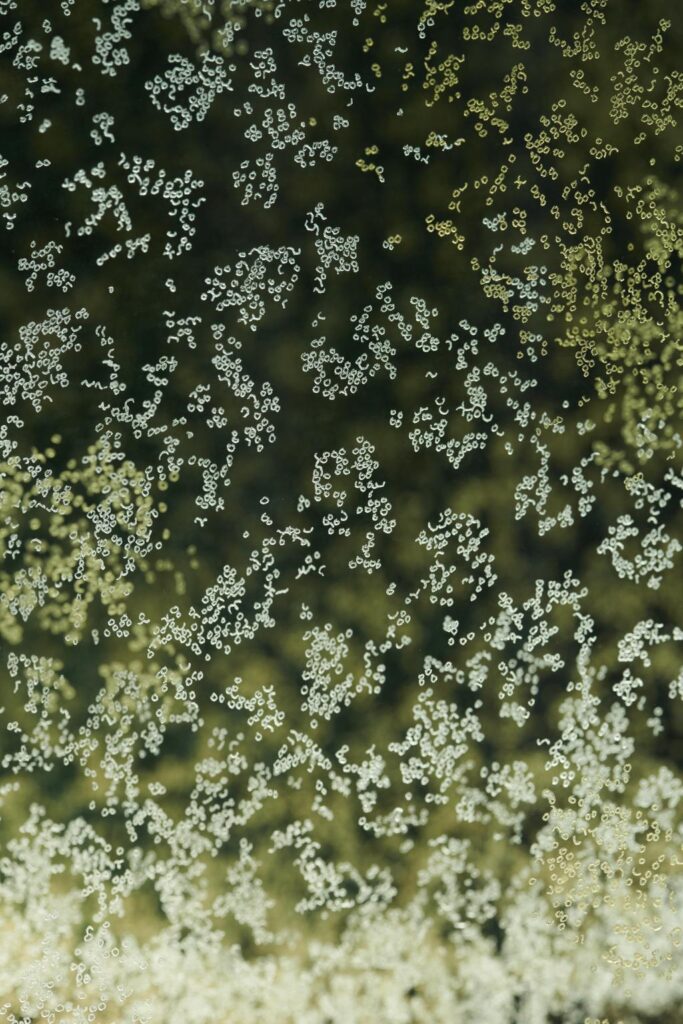What do bubbles remind you of? Blowing bubbles as a child? A hot foamy bath? Maybe champagne and celebration?
Untitled (Bubble) by Rachel Whiteread DBE is more ambiguous and subdued. The print features overlapping circles in different sizes and shades of grey, sometimes faint, sometimes inky blots. It creates a dense abstract pattern.

Acquired in memory of Dr Joshua Charles (Joss) Leigh 1904–1973
Rachel Whiteread, who is perhaps best-known for her uncanny sculptures of negative spaces of objects and interiors, made this print in 2022 during the COVID-19 pandemic. In this context the circles or ‘bubbles’ can evoke the ominous outline of the virus, which we all became familiar with through its visual representations in the media.
But at the same time, other associations spring to mind. If you lived in Britain during the pandemic, then you might associate the word ‘bubble’ with lockdowns when the government restricted social interactions to household ‘bubbles’ to limit the spread of the virus.
Looking at the print, you could also be reminded of petri dishes filled with ominous live cultures. Or you could also see the overlapping rings as the traces left by bottles or glasses, recalling fun-filled parties of the past. In monochrome grey, the print also suggests something of the nostalgia of black and white photographs.
In fact, Whiteread revisited a motif from her LOndOn 2O12, a print she was commissioned to create to mark London’s Olympic Games. It featured overlapping circles in the bright colours of the Olympic rings: this print is about coming together and celebrating. But a decade and a pandemic later, Untitled (Bubble) suggests the complex emotions and varied experience of life during COVID-19.
For Whiteread, this openness and the suggestion of memories and traces is key: ‘I wanted to make something that looks like the traces of something. It could be the traces of the virus, traces of memories of people who passed away, of happiness, of loneliness.’
The microscopic virus also sparked Angela Palmer’s imagination.

Scottish artist Palmer draws on medical imaging techniques such as MRI and CT scanning to create a three-dimensional visualisation of something hidden or difficult to see, like her own brain or an area of space.
In the early days of the pandemic, Palmer turned her attention to representing the microscopic virus. With 2020: The Sphere that Changed the World, Palmer magnified the virus, turning it into a visible ‘glowing presence’.
To reconstruct its image, she collaborated with computer scientist and bioinformatics Professor Dmitry Korkin at the Worcester Polytechnic Institute in Massachusetts who was modelling the virus and its deadly spikes. Palmer then engraved by hand the image on 28 sheets of glass. Once lit, the work reveals a glowing three-dimensional virus which appears to float. It’s at once beautiful and threatening.


Looking back on her sculpture, Palmer reflects: ‘The installation may prompt reflection and contemplation of loss – a loss that will, of course, be unique to each of us.
Laid bare, at eight million times its size, the particle may also offer empowerment and agency, seen suspended and imprisoned in glass, open to scrutiny and interrogation.’
As COVID-19 recedes from the news, both Rachel Whiteread and Angela Palmer help us reflect on the complexity of living in a pandemic.
For more on the Science Museum’s art and COVID-19 collections:
– COVID-19: Pandemic Art with Angela Palmer and David Goodsell
– COVID-19: Pandemic Art with Grayson Perry